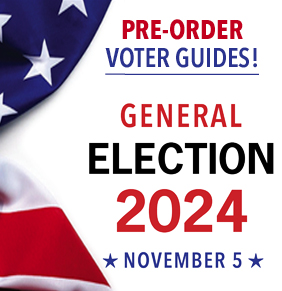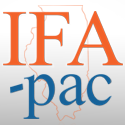Fact Check: Clinton, Sanders Revise History in Dem Debate
Associated Press
Hillary Rodham Clinton revised history in the Democratic debate when insisting she’s not a flip-flopper on a trade deal she promoted as secretary of state but turned against as a presidential candidate.
Bernie Sanders overstated the share of wealth being taken by the richest Americans, a subject that goes to the core of his campaign.
A look at some of the claims in the debate among Democratic rivals Tuesday night and how they compare with the facts:
CLINTON on the Trans-Pacific Partnership: “I did say, I hoped it would be the gold standard'” of trade agreements.
THE FACTS: Clinton did not say anything about mere hope in her speeches around the world in support of the trade deal. She roundly endorsed the deal taking shape.
In a November 2012 speech in Australia, she declared the Trans-Pacific deal “sets the gold standard in trade agreements,” a sentiment she echoed in many venues.
Clinton said in the debate that when she looked at the final agreement last week, “it didn’t meet my standards.”
The final agreement, however, dropped or changed some provisions that liberal activist groups — the wing of the party she is assiduously courting at this stage of the campaign — had strongly criticized.
___
SANDERS: “Almost all the new income and wealth is going to the top 1 percent.”
THE FACTS: Sanders appears to be relying on outdated data. In the first five years of the economic recovery, from 2009 through 2014, the richest 1 percent of Americans captured 58 percent of income growth, according to Emmanuel Saez, a University of California economist whose research Sanders uses. While certainly a large gain, that is a lot less than “almost all.”
In just the first three years of the recovery, from 2009 through 2012, the richest 1 percent did capture 91 percent of the growth in income. But part of that occurred because of impending tax increases on the wealthiest Americans that took effect in 2013.
Many companies paid out greater bonuses to their highest-paid employees in 2012 before the higher tax rates took effect. Those bonuses then fell back in 2013. And in 2014, the bottom 99 percent finally saw their incomes rise 3.3 percent, the biggest gain in 15 years.
___
CLINTON on her email practices: “I have been as transparent as I know to be. … I said I have answered all the questions.”
THE FACTS: Clinton has yet to explain how the server was set up and serviced, whether she informed the State Department about her decision to use the private system and, most important, how it was protected from hacking attempts.
Russia-based hacking attempts tried at least five times to trick her into infecting her computer system with malware in 2011, The Associated Press learned, and her server was hit by attempted cyber intrusions in 2014 from China, South Korea and Germany.
Her server also was connected to the Internet in ways that made it more vulnerable to hackers. But her campaign has repeatedly declined to address these details.
__
SANDERS: “Make every public college and university in this country tuition-free.”
CLINTON: “My plan would enable anyone to go to a public college or university tuition-free. You would not have to borrow money for tuition.”
THE FACTS: Free for the students, but someone has to pay.
Clinton and Sanders both would shift more college costs onto taxpayers and away from parents and students.
Sanders’ plan would cover tuition and fees at public universities — a $70 billion annual expense with the federal government picking up two-thirds of that tab by taxing trading in the financial markets.
Students would still be on the hook for room and board costs that average $9,804, according to the College Board.
The Clinton plan is bound to cost more than the $35 billion per year over 10 years projected by her campaign. This is because more students would probably switch to public universities on the potential to graduate without debt, raising costs for the government and potentially leaving many modestly endowed private institutions in the lurch.
The potential of a debt-free education would also depend on states providing reliable money streams and controlling costs — both major sources of uncertainty. But the Clinton plan would also expose a sharp generational divide. New college students would be helped, but the 40 million Americans who already owe a combined $1.2 trillion in education debt would receive little aid other than refinancing at lower rates.
Neither candidate told TV viewers about the costs to the treasury of what they propose.
___
SANDERS: “What we need to do is … raise the minimum wage to $15 an hour.”
THE FACTS: That might boost pay for many workers, but as with college tuition, there’s a cost: His plan would probably cause many low-wage employers to outsource or automate some jobs.
Economists have long debated the impact of raising the minimum wage, and some recent research has found that modest increases don’t actually cost many jobs. But a jump to $15 an hour would be more than double the federal minimum of $7.25. It would also be far above the minimum wage’s previous peak of just under $11, adjusted for inflation, in 1968.
And a $15 minimum wage is above the median wage in eight states, which suggests a boost to $15 could cause widespread job losses in those states.
___
CLINTON on her Syria strategy as secretary of state: “What I said was we had to put together a coalition … and yes, it included Arabs, people in the region, because what I worry about is what will happen with ISIS gaining more territory, having more reach, and frankly posing a threat to our friends and neighbors in the region and far beyond.”
THE FACTS: Clinton is ignoring much of the context of her coalition-building effort in Syria: It was designed to push Syrian President Bashar Assad from power, not target the Islamic State or other extremist groups fighting among the opposition.
As secretary, Clinton helped spearhead meetings of the U.S. and various Arab and European countries frustrated by the escalating conflict in Syria. The coalition was concerned primarily with helping armed opposition groups better defend themselves and directing political groups to coalesce behind a common, inclusive platform for a post-Assad Syria.
At that time, the Islamic State didn’t exist. But al-Qaida and other terrorist groups did. And even as they gained a foothold and became increasingly prominent among the anti-Assad rebels, the coalition Clinton worked on didn’t come up with a military plan for combatting them.
This report was originally published by the Associated Press.














